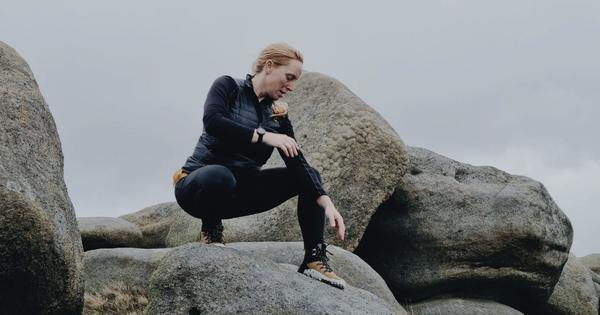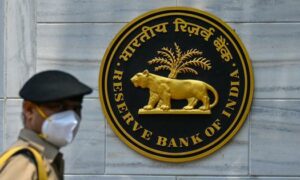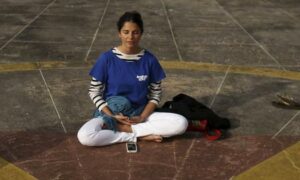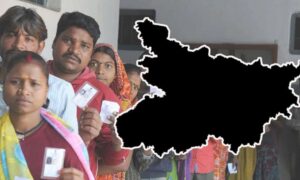
It rains a lot here in the wettest place on earth. Months and months of steady, unrelenting rain, falling on our rooftops, falling on our hills. I’ve imagined it as many things – a singer of lullabies, a bringer of stories, a re-filler of our rivers, a greener of our forests, a conjurer of mist and mold—but never quite as an active agent of change, physically shaping our landscape, year after year, century after century. Perhaps this is proof of “geological blindness”, a term that describes how most of us are unaware of or don’t nearly enough appreciate the significance of geological features and intricate geological processes, quietly continuing around us in the natural world. But rain does weather a place. It dislodges and erodes, it chemically reacts, it freezes and frosts and forces apart, it thaws, it dissolves.
Weathered by life
And I’ve been learning about this and more over the last few months, guided by a slew of books. Everything by American geologist Marcia Bjornerud, and more recently, Weathering: How the Earth’s Deep Wisdom Can Help Us Weather Life’s Storms by Ruth Allen. Weathering, in geological terms, describes the wearing down or breaking up of rocks while they are in place – through biological processes like the movement of plants and animals, and even us as we trod in boots and shoes over the same patch of stone, physical processes like wind, waves, changes in temperature (and yes, rain), and chemical processes involving water or air that alter the mineral composition of rocks leading to disintegration and decay. We may also use the term metaphorically—to speak of ourselves “weathering” a particular hardship or situation, or for a ship, for instance, to weather a storm, or to be “weathered” by life. Allen, who trained first as a geologist and then as a psychotherapist, brings together, in book and practice, these seemingly disparate disciplines, conjuring questions that embrace landscapes within, without: “What happens when the earth is shaken under our feet, undermining the foundations of everything we have known? How do we live with (or even close) the fault lines that open through trauma? How do we negotiate erosive and accumulative periods over time? What would it really mean to weather well?”
It’s imperative that Weathering begins outdoors.
And so, we encounter Allen walking the landscape of the Peak District, laying out for us the geological origin story of the place intertwined with her own. She shares how fundamental learnings in her PhD studies on mountain-building – that every upland is first and foremost an erosive environment, that mountains only stay upright because of the erosion that is constantly unburdening the land of its heavy accumulated material – helped her arrive at two truths: “one, that in order to evolve and grow, we must be prepared to face the erosive aspects of life. Two, it’s the weathering that creates the finest landscape of our lives, shaping us and defining us over time.” Building bridges like these, between the processes of the natural world and the varied experiences of our own lives, helps cement a sense of mirroring between earth and self, and consolidate our earthiness, this is who we are, this is what we are inherently part of. It also allows Allen to gently, and startlingly, direct our attention to the many life-learnings we may gather from geological formations, soil, fossils, forests, and most pertinently, rocks. We may learn about self-limits, for instance, from the Eastern Edges in the Peak District, a curious collection of gritstone escarpments, or long steep slopes, that run near continuous for 35 km across the windswept landscape.
Allen allows for these felt and visible geological limits to offer us reflections on our own tricky relationship with boundaries – how to negotiate them healthily, how to find flexibility or steadfastness when required. During a therapy session, Allen takes a walk here with a patient close to burnout, struggling with her inability to say no, to ask for help, to find her limits. “I have brought us here to play at the escarpment,” Allen says, “to connect with this striking landscape in a way that might help bring certain thoughts, feelings, ideas and concepts to life with new clarity. It is useful to work with images and metaphors in words, but better still to embody them.”
“To embody” is an act central to Allen’s work, and I’m reminded over and again how it’s a word distilled from the Latin incorporare, “in-’ (meaning “into”) and “corpus” (meaning “body”), literally translating to “to form into a body” or “to embody”. Another of Allen’s patients, one who has suffered innumerable bereavements through his young life, is invited to “embody” a relationship with his “immovable material” and asked to literally push a boulder. He tries and fails, and tries again, resorting to all sorts of creative tactics; he tries to walk away and is unable to. Eventually, he makes a scramble to the top and gives Allen a smile and a captain’s salute from his new heights. His actions carry all the answers he needs – but they are, ever more importantly, an embodied discovery. One of my favourite chapters in the book, “The Resourceful Body”, allows us to accompany a small group of women that Allen is leading into The Woolpacks, a collection of uniquely shaped rock formations on a high moorland in the Peak District.
Inner and outer landscapes
Allen shares that she has brought the group here to spend some time with the rocks, to investigate the connection between inner and outer landscape, and learn to listen a little more deeply to the natural world with their whole bodies. “I would like the group to encounter and engage with the landscape through their bodies first, rather than their minds,” she reiterates, “and make new associations and discoveries that might be useful for them in their day-to-day lives.” Here, I too encounter questions to ask myself when I’m outdoors, walking the stone-riddled uplands of the Khasi Hills – “What does it feel like to be here? How do you experience your body in this environment? How do you want to move? What does an embodiment with rock mean to you? How can we listen to rock and what needs to be heard? Who are you, out here?” The group disperses, and we follow Allen on her own engaging with the boulders, walking around, closely noticing which rocks she is drawn to, touching a rock’s surface, “feeling its temperature, texture, and contours”. She listens, she climbs on rocks willing to be climbed upon, she stands, stretches and dances. She finds a “slow flow”, moving on and around the rock, through the corridors between the boulders. “I become water finding a route through the cracks; a human fractal of the process that these rocks have seen for millennia.” This intimacy between body and stone, self and stonescape, illuminates for us Allen’s deep engagement with ecosomatics, an emergent “nature-based discipline at the intersection of ecology, the environment, and the lived experience of the body.” A discipline that places our experience as a body within the larger web of life – affixed, inseparable, and perpetually enmeshed in relationship. Somatic practices, focusing on the felt sense of a body, are combined with ecological principles, drawing out patterns, connections, changes both within the environment and the self. Allen’s particular interest, of course, is rocks – “What is it like to spend time with rock? How do they make us feel? What do they have to tell us about themselves?”
Weathering ends with a long walk. That Allen undertakes on her own along Manifold Way in the southern Peak District. A path that will take her home. And amidst descriptions of limestone valleys and her reflections on walking, we are also made privy to the fact that Allen is working on a collaborative project with artist, cultural geographer and sound recordist Rob St John – to “record the sound of the geology of home.” On his walk in the same area, St John would be using a specially adapted “geophone” designed to turn low rumbling rock noise into a sonic frequency we can hear. When his recordings are received (via email!), we wish so much we could listen along with Allen. The recordings bring the listener, she says, into stillness. They crackle and pop, and are filled with white noise from white rock, monotonal and circular, minimal and ambient. The recordings make Rob realise, Allen says, that “rock is a resonator. Rock is a sound mirror.” Much like Allen says, the work of a therapist is. And much like, for me, this book itself. A resonator that amplifies integral yet often overlooked connections, that allows the relational to hum through.
For someone whose disciplinary boundaries are so generously capacious and mutable, Weathering emerges into our hands in fitting unruly form, as a text that spills and splashes, stays and stands, wanders and meanders, rambles and roots. It is, like Robin Kimmerer’s Braiding Sweetgrass or Bjornerud’s Turning to Stone, that rare book that illuminates for us the natural world and also offers itself up as a life-guide, brimming with knowledge and wisdom gathered over the years. The words in Weathering feel like touchstones – still and held in place, waiting for you to encounter, engage, and be transformed.
Janice Pariat is the author of Boats on Land: A Collection of Short Stories, the novels Seahorse, The Nine Chambered-Heart, and Everything the Light Touches. Currently, she teaches Creative Writing and Art History at Ashoka University.
Weathering: How the Earth’s Deep Wisdom Can Help Us Endure Life’s Storms, Ruth Allen, Ebury Press.
This article first appeared on Scroll.in
📰 Crime Today News is proudly sponsored by DRYFRUIT & CO – A Brand by eFabby Global LLC
Design & Developed by Yes Mom Hosting






